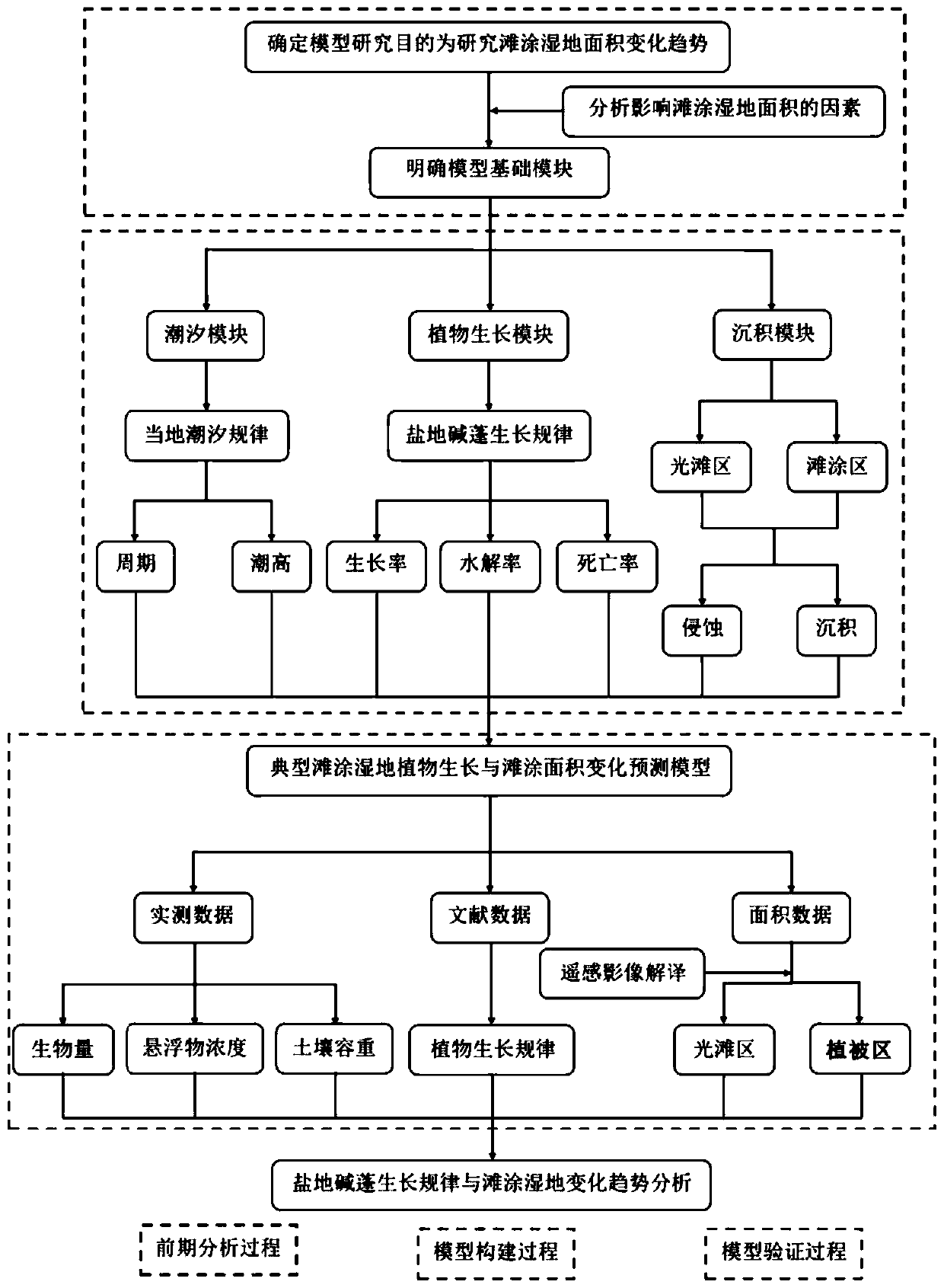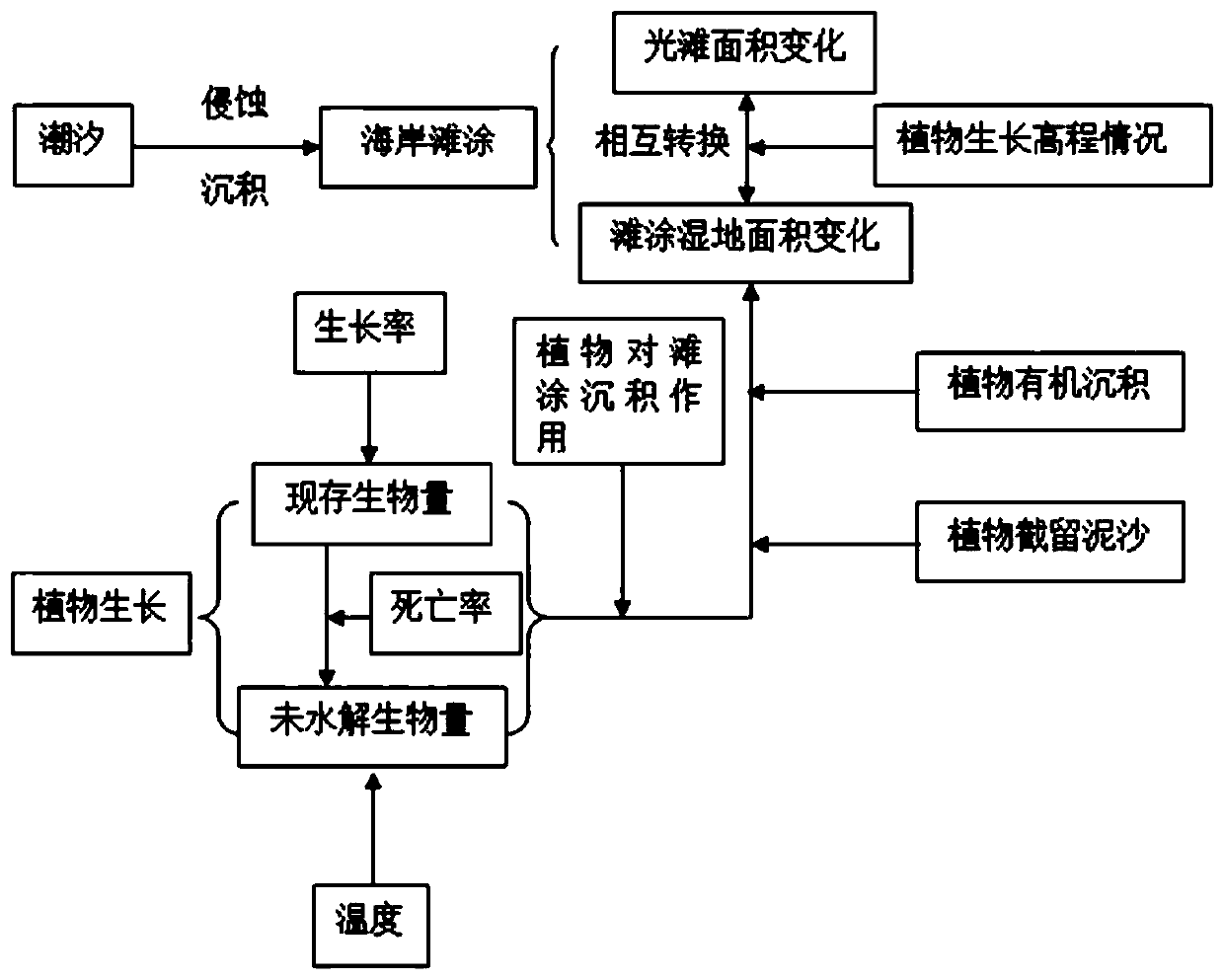Method for predicting future intertidal zone area development trend based on intertidal zone area change model
A technology of area change and model prediction, applied in prediction, design optimization/simulation, data processing applications, etc., can solve problems such as ignoring the impact of tidal flat vegetation and taking into account the deposition and erosion process of tidal flat wetlands
- Summary
- Abstract
- Description
- Claims
- Application Information
AI Technical Summary
Problems solved by technology
Method used
Image
Examples
Embodiment Construction
[0080] The present invention will be further described below in conjunction with specific embodiments.
[0081] The invention consists of three parts, such as figure 1 Shown: tide model, plant growth model and sedimentation model.
[0082] Such as figure 2 As shown, the tide model mainly simulates the periodic tidal submergence of the intertidal zone. The plant growth model mainly simulates the annual biomass and litter quality changes of typical annual vegetation in the intertidal zone and their impact on the deposition of the intertidal zone. The sedimentation model simulates the dynamic process of deposition and erosion of the intertidal wetland under the influence of tides and vegetation, and outputs area change data.
[0083] A method for predicting the future development trend of the intertidal area based on the intertidal area change model. The steps are as follows:
[0084] (1) Field visits to confirm the main vegetation types in the intertidal zone, sampling to determine t...
PUM
 Login to View More
Login to View More Abstract
Description
Claims
Application Information
 Login to View More
Login to View More - R&D
- Intellectual Property
- Life Sciences
- Materials
- Tech Scout
- Unparalleled Data Quality
- Higher Quality Content
- 60% Fewer Hallucinations
Browse by: Latest US Patents, China's latest patents, Technical Efficacy Thesaurus, Application Domain, Technology Topic, Popular Technical Reports.
© 2025 PatSnap. All rights reserved.Legal|Privacy policy|Modern Slavery Act Transparency Statement|Sitemap|About US| Contact US: help@patsnap.com



